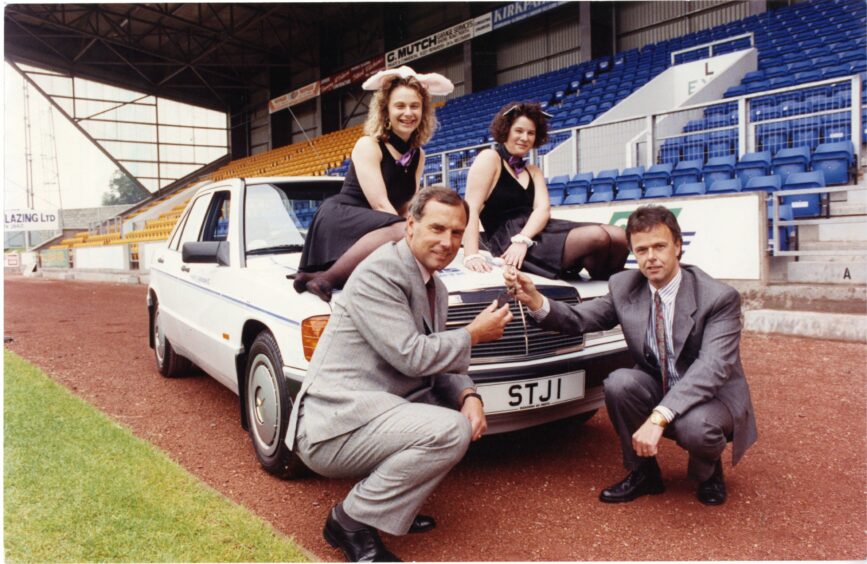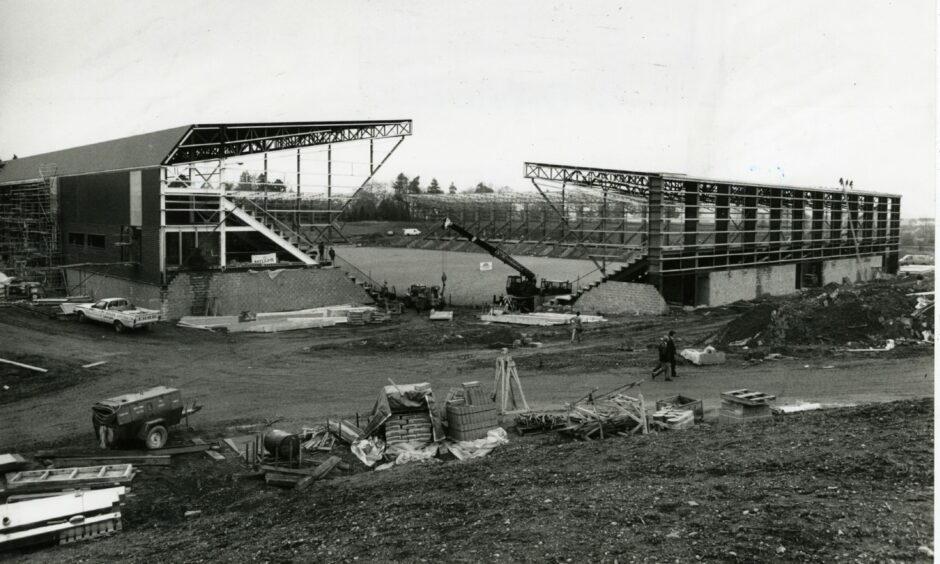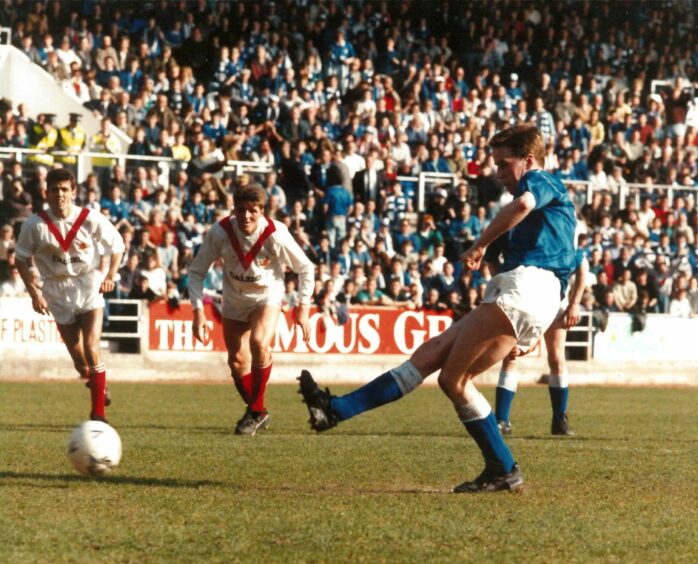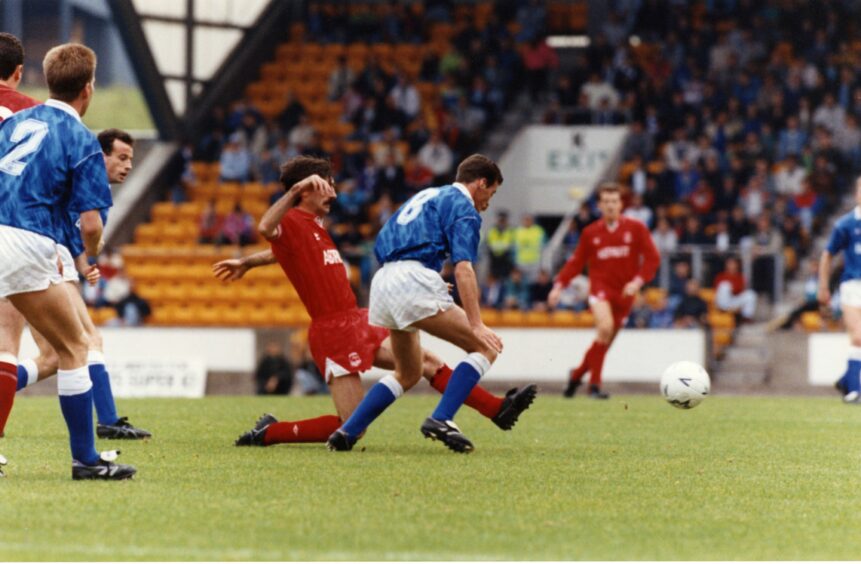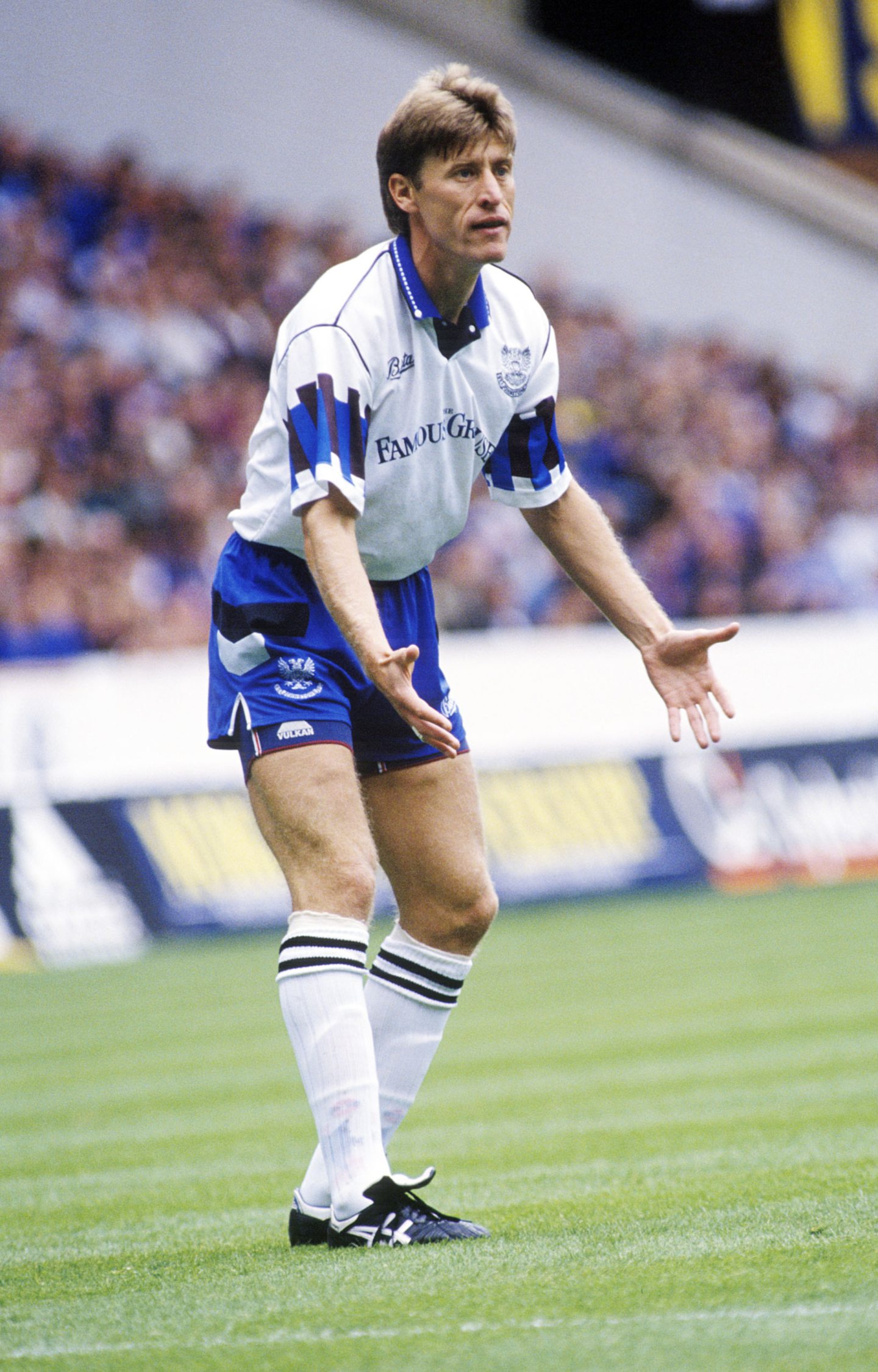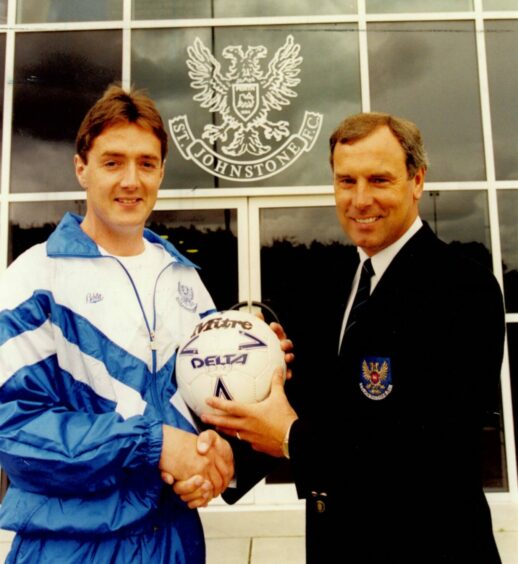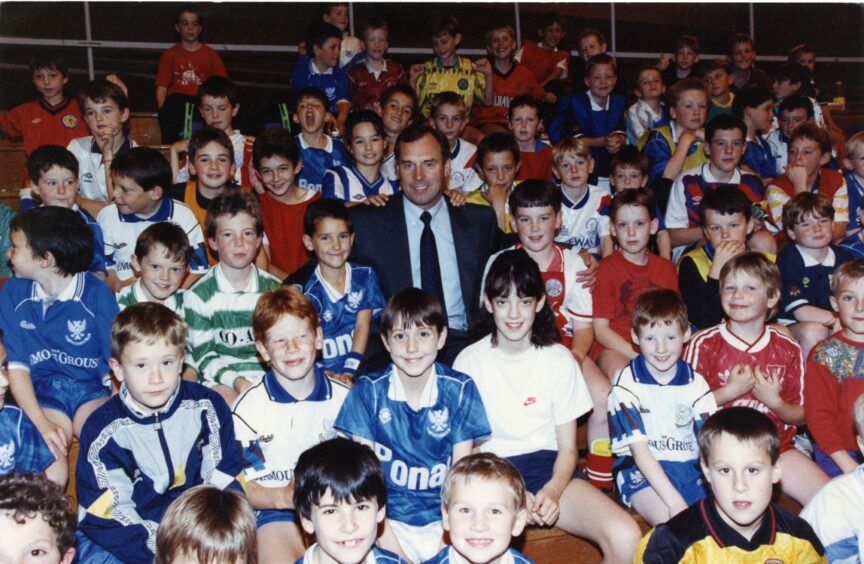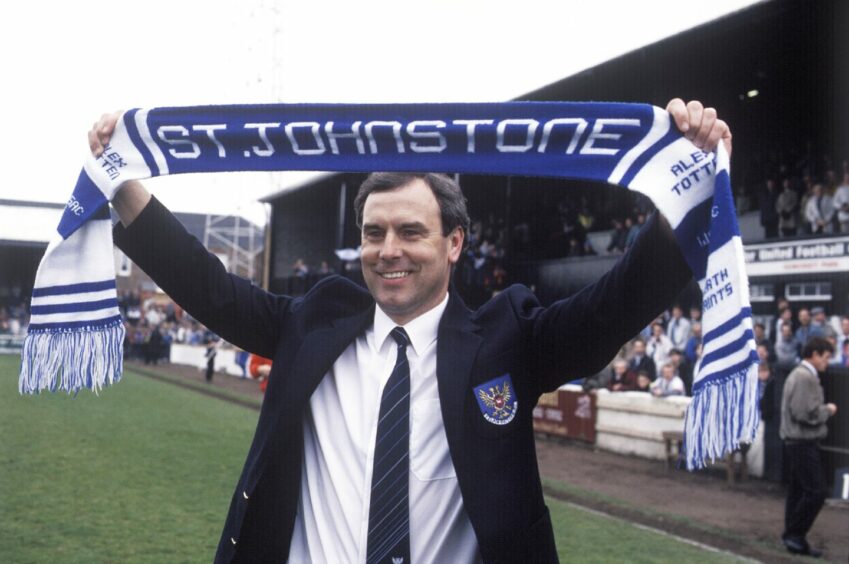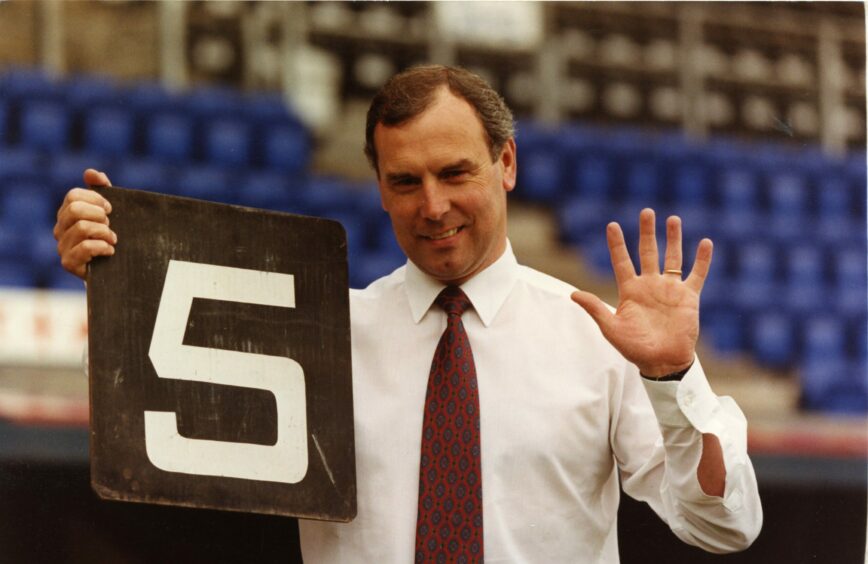
Alex Totten worked the St Johnstone miracle when he took the lower-league strugglers to the Premier League and three national cup semi-finals.
A World Cup star was signed during the transition from rags to riches in which the Perth club also moved to their brand new, state-of-the-art home: McDiarmid Park.
Totten parted company with St Johnstone 30 years ago, on December 14 1992, following a five-year spell in charge after being appointed by chairman Geoff Brown.
Brown was enticed to the boardroom in May 1986 after Saints had played Queen of the South in front of just 364 fans and were 38th in the Scottish league.
Brown provided the platform from which the modern-day Saints have gone forward and Totten played a major role in sprinkling the magic dust on the pitch.
These were heady days for the men from the Fair City and chronicling all of them was my former colleague James Masson, who for 40 years covered Saints day in, day out for the Evening Telegraph.
I spoke to James about those days and he recalled a very interesting tale from before Totten was even appointed.
James said: “Alex’s first match in charge was a home league game against Raith on May 2 1987, Andy Millen netting in a 1-1 divide.
“However, on February 3 of that year, I was at Central Park, Cowdenbeath, one midweek to see Saints lose a 16-match unbeaten league run by being defeated 4-3 by Cowdenbeath.
“Playing for Cowden that night were Paul Cherry, Roddy Grant and Billy Blackie.
“Alex was at the game, too, watching Cowden. He was manager of Dumbarton at the time and Cowden were the Sons’ next opponents.
“Soon afterwards, Alex was named Saints new manager in place of Ian Gibson and among his signings during his spell in Perth were Cherry, Grant and Blackie, three of the players chiefly responsible for St Johnstone’s defeat that night.
“Cherry and Grant did well for Saints and Roddy is still at the club today as a director.”
Totten’s story starts back in 1961
Bill Shankly signed Totten for Liverpool in 1961, before he came back to Scotland to play for Dundee, Dunfermline, Falkirk, Queen of the South and Alloa.
He finished his playing career in 1978 and cut his managerial teeth at Alloa from 1980 to 1982, before going to Brockville as Falkirk manager in November 1982.
Totten left to become Jock Wallace’s assistant at Rangers from 1984 and moved to take charge at Dumbarton in 1986 following the arrival of Graeme Souness at Ibrox.
St Johnstone were languishing in the doldrums with crowds in the 100s rather than 1,000s when Totten accepted Geoff Brown’s offer to swap Boghead for Muirton Park.
The Perth club, however, were already taking initial steps to move away from their dilapidated home to a purpose-built, 10,000-capacity all-seater stadium.
In Totten’s first full season in charge, Saints finished second in Division Two and were promoted as runners-up to Ayr United.
Season 1988-89 saw St Johnstone do well in the First Division and reach the Scottish Cup semi-final where they took on Rangers at Parkhead and drew 0-0.
Although the Perth men lost 4-0 in the replay, that display in the first match made sure Scottish football was wakening up to the resurgent Saints.
McDiarmid Park was brought to fruition the following season and St Johnstone started attracting crowds of 8,000 and 9,000 fans in the First Division.
James said: “McDiarmid Park’s first game was on August 19 1989.
“Jim Hughes of Clydebank scored after 12 minutes, making him the first player to net at the new ground, but a Don McVicar penalty and Harry Curran gave Saints a 2-1 win.
“Promotion as champions was achieved that season after a titanic battle against Airdrie which saw Saints win 3-1 in a pivotal game against the Diamonds on March 31 in front of 10,170 at McDiarmid.”
A lot of fans will put that day alongside the Scottish Cup win.
The names of players like Roddy Grant, Grant Jenkins, Kenny Thomson, Allan Moore and Mark Treanor still trip off the tongue of every Saints fan.
Next season saw Saints in the Premier League where they finished a respectable seventh in the 10-team league.
They didn’t get off to the best of starts but, on September 29, they flattened Aberdeen 5-0 at McDiarmid to turn their season around.
The four weekends of October made sure this was no freak occurrence.
A 0-0 draw was earned at Celtic Park, Hearts were beaten at Tynecastle, the points were shared with Rangers at McDiarmid, and they beat Dundee United at Tannadice.
Sergei Baltacha’s arrival came in 1990, after Saints had galloped through the leagues.
The Ukrainian central defender had played 100 times for the Soviet Union (though he was capped only 47 times officially) and had captained his country.
He had won an Olympic bronze medal, a World Youth Cup medal and an under-21 European Championship medal.
He was part of the Soviet side to lose to Holland in the 1988 European Championship final and played in the 1982 World Cup finals in Spain.
James went on: “I saw Alex in Perth a few weeks ago and his affection for Saints has not diminished.
“We talked about the old times and the great days, remembering events such as the time the whole of Scottish football stood up and took notice when Saints signed World Cup star defender Sergei Baltacha.
“Sergei wasn’t doing too well at Ipswich and the late Ian Redford, who became a strong acquaintance of mine, was, I believe, instrumental in Sergei coming to Saints.
“Ian was a team-mate of Sergei’s at Ipswich before Ian, too, came to Saints, his hometown club.
“Everyone was gobsmacked at what was a terrific signing.
“Suddenly, folk who never took an interest in Saints now did.”
Totten’s role in St Johnstone’s progress was rewarded when he was named by the Football Writers’ Association as their Manager of the Year in 1991.
Season 1991-92 saw them finish eighth in the 12-team Premier League but cracks were beginning to show, despite Saints getting to another League Cup semi-final.
Totten’s last match came on December 12 1992, when they drew 1-1 at home to Hearts.
Joe Jordan’s side were fourth in the table at the time and the draw actually moved Saints up a place from eighth to seventh.
Brown had already made his mind up that a change was needed.
Totten was sacked without ceremony on the Monday morning after being in charge of Saints for 252 games, of which 109 were won, 63 drawn and 80 lost.
A total of 382 goals were scored and 320 conceded.
He was replaced by John McClelland.
So what happened next?
Managerial spells at East Fife and Kilmarnock followed before Totten took over at Falkirk again from 1996 to 2002, during which time he led the Bairns to the 1997 Scottish Cup final, which they lost 1-0 to Killie.
Totten moved into the commercial department at Brockville in 2002 following a short director of football role before being named lifetime ambassador in 2020.
Known as Mr Falkirk, Totten retired in 2021 after commercially making around £2m for the club but continues to represent his boyhood heroes in his ambassadorial role.
So how does Totten look back on his time at St Johnstone?
“I loved my time in Perth,” he said.
“I managed for 22 years at six clubs and I can say that undoubtedly my time at St Johnstone was my most enjoyable.”
